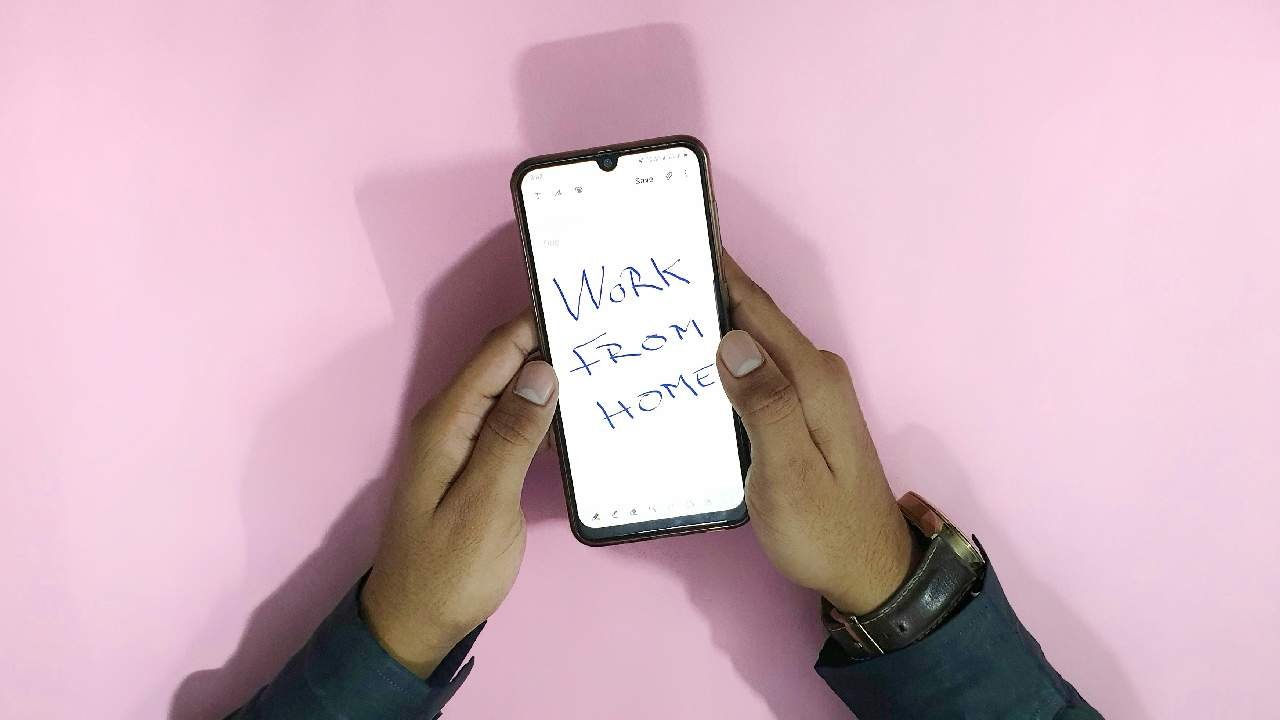Table of Contents
For remote workers across Africa, the best SIM card for remote workers in Africa is one of the biggest challenges. If You can have the skills, the motivation, and the clients — but if your internet is slow, expensive, or unreliable, it becomes hard to stay consistent.
I know it is hard, especially for those who live in small towns or rural areas, struggle to find the right SIM card or Wi-Fi option that works for their location. Some networks are fast in the city but weak in the village. Others offer cheap data, but the connection drops when you need it most.
In this guide, we’ll look together at the best SIM cards and Wi-Fi solutions for remote workers in different parts of Africa. Whether you’re working with just your smartphone or using a laptop with a Mi-Fi device, this article will help you choose the internet option that keeps you connected and productive — no matter where you are.
1. What Remote Workers Need From Internet Providers
Before choosing a SIM card or Wi-Fi device, it’s important to know what actually matters for working online. Remote work is not the same as browsing Facebook or watching YouTube for fun. You need internet that is fast, stable, and affordable — especially if you work from home every day.
Here are the most important things to look for:
1. Strong Network Coverage
The most important factor is whether the network works well in your specific area. Even a good company like MTN or Airtel might be slow in some villages. Always test the signal strength in your location before choosing a provider.
2. Affordable and Flexible Data Plans
Remote workers use the internet every day, so buying expensive bundles every few days is not sustainable. Look for providers that offer daily, weekly, or monthly plans at good prices. Some even offer unlimited plans or night bundles for heavier use.
3. 4G or 5G Speeds
Many online jobs require you to upload files, join Zoom meetings, or work with tools that need fast internet. If possible, choose a provider that offers 4G or 5G in your area. These are usually faster and more reliable than 3G.
4. Hotspot and Tethering Support
Sometimes you’ll need to share your internet connection with another device — like a laptop or second phone. Make sure your SIM card or data plan allows you to use hotspot or tethering without extra charges.
5. Easy Recharge and Customer Support
Choose a provider that makes it easy to top up your bundles using mobile money, USSD codes, or apps. Good customer service also matters, especially when you need help fixing connection issues.
2. Best SIM Cards by Country or Region
Internet quality is not the same across Africa. Some countries have better coverage, cheaper bundles, or faster speeds. That’s why it’s important to choose a SIM card that works well in your country or region — not just the one that’s popular elsewhere.
Here are some of the best SIM card options for remote workers, based on coverage, speed, and data plans. These are based on real experiences from freelancers and online workers across the continent.
West Africa
Nigeria:
MTN – Great coverage in both cities and rural areas, offers good 4G speed and decent bundle plans.
Airtel – Cheaper data than MTN in some areas, also has strong network reach and flexible plans.
Ghana:
MTN – Strong national coverage and fast 4G, but can be more expensive than others.
Vodafone – Offers competitive bundles, especially for heavy data users. Good for urban areas.
Senegal:
Orange Senegal – Reliable for mobile data, especially in cities and towns. Offers daily and monthly bundles that work well for freelancers.
East Africa
Kenya:
Safaricom – Widely available and fast, especially in urban areas. Good customer support and clear bundle options.
Airtel Kenya – Cheaper than Safaricom with decent coverage. Works well for people on a budget.
Uganda:
MTN Uganda – Offers good 4G speeds and flexible bundles. Works well in most regions.
Airtel Uganda – Also has wide coverage and competitive pricing, especially for weekly and monthly plans.
Rwanda:
MTN Rwanda – Best coverage across the country, especially outside Kigali.
MANGO 4G: best in urban Fast and reliable, great for video calls and remote work. Better pricing they offer free router if you buy bundle every month.
Airtel-Tigo – Offers better pricing on some bundles, especially for night or weekend use.
Southern Africa
South Africa:
Vodacom – Fast and reliable, great for video calls and remote work. Slightly more expensive.
MTN South Africa – Good performance across cities and rural zones. Flexible bundle options.
Zambia:
Airtel Zambia – Strong presence in cities, offers weekly and monthly bundles suitable for remote workers.
Zamtel – More affordable, but works best in urban areas.
Zimbabwe:
Econet – Dominates the market with good coverage and mobile money options. Data bundles can be expensive.
NetOne – Cheaper, works well in many regions, especially for basic tasks.
Central Africa
Cameroon:
MTN Cameroon – Offers wide coverage, including smaller towns. Good 4G performance.
Orange Cameroon – Competitive pricing, especially on monthly plans. Reliable in urban areas.
Democratic Republic of Congo (DRC):
Airtel DRC – Widely available and affordable. Great for people starting out.
Vodacom DRC – More stable connection in major cities, slightly higher prices.
eSIMs (Airalo, Holafly) – Perfect for digital nomads who move between countries. Easy to activate online without buying a local SIM.
If you are traveling to multiple countries, an eSIM might be easier. If you stay long-term in one country, a local SIM is usually cheaper and faster.
Each country has its own strengths, so the best SIM card really depends on where you live. If you travel often or live near a border, it may help to have two SIM cards from different providers in case one network goes down.
| Country | Best SIM Card Providers | Coverage | Data Pricing | Speed (4G/5G) | Best For |
|---|---|---|---|---|---|
| Nigeria | MTN, Airtel | MTN: ExcellentAirtel: Very Good | Airtel: Cheaper | Both offer solid 4G | Cities and rural areas |
| Ghana | MTN, Vodafone | MTN: NationalVodafone: Urban | Vodafone: Budget-Friendly | MTN 4G is faster | Freelancers needing consistent speed |
| Senegal | Orange Senegal | Good in towns/cities | Flexible daily/monthly | Good 4G | General freelance work |
| Kenya | Safaricom, Airtel Kenya | Safaricom: WideAirtel: Decent | Airtel: More affordable | Safaricom 4G is faster | Urban users & heavy internet tasks |
| Uganda | MTN Uganda, Airtel Uganda | Both have good reach | Both flexible and fair | Reliable 4G | Online meetings, uploads, Zoom |
| Rwanda | MTN, MANGO 4G, Airtel-Tigo | MTN: NationalMANGO: Urban | MANGO: Best value | MANGO: Fast 4G | Video calls, remote work, teaching |
| South Africa | Vodacom, MTN | Excellent in most areas | Vodacom: Expensive | Great 4G/5G options | Professional remote jobs |
| Zambia | Airtel Zambia, Zamtel | Airtel: UrbanZamtel: Urban | Zamtel: Budget plans | Airtel faster | Remote workers in cities |
| Zimbabwe | Econet, NetOne | Econet: Best coverage | NetOne: Cheaper | Econet better for 4G | Online freelancers, basic work |
| Cameroon | MTN, Orange | MTN: Even rural areas | Orange: Affordable | MTN slightly faster | Remote work outside cities |
| DR Congo | Airtel, Vodacom DRC | Airtel: Widely available | Airtel: Cheaper | Vodacom: More stable | Beginners & heavy tasks in cities |
Coverage is relative and can vary within each region. Always test if possible.
Data Pricing assumes moderate use — for heavier work, unlimited or large bundles are better.
Speed reflects general 4G/5G availability and real-world user feedback.
3. Pocket Wi-Fi and Mi-Fi Devices That Work Across Africa
For many remote workers, especially those who use laptops or multiple devices, relying solely on your phone’s mobile data can be limiting. This is where Pocket Wi-Fi or Mi-Fi devices become valuable tools. These devices allow you to create a personal Wi-Fi hotspot by connecting to a mobile network using a SIM card.
What Exactly Are Pocket Wi-Fi and Mi-Fi Devices?
Pocket Wi-Fi or Mi-Fi devices are small, portable routers that connect to the internet via a cellular network (3G, 4G, or 5G).
Once connected, they broadcast a Wi-Fi signal that lets you connect multiple devices like laptops, smartphones, and tablets at the same time.
This means you can share one mobile data connection across all your work devices, making it ideal for freelancers, digital marketers, teachers, and other remote workers.
Why Use a Pocket Wi-Fi or Mi-Fi?
Better Signal Strength: Unlike using your phone’s hotspot, dedicated Mi-Fi devices often have better antennas and reception, giving you stronger and more reliable internet access.
Battery Life: These devices typically have a built-in battery that lasts between 6 to 12 hours, allowing you to work even in places without electricity.
Multiple Device Connectivity: Most devices allow 5 to 10 devices to connect simultaneously, which is useful if you’re working with multiple gadgets or sharing internet with family or colleagues.
Ease of Use: Once set up, you just switch it on, and you have a Wi-Fi hotspot ready — no complicated settings needed.
Popular Pocket Wi-Fi and Mi-Fi Devices in Africa
Huawei Mobile Wi-Fi: Huawei is one of the most popular brands for Mi-Fi devices worldwide. Models like the Huawei E5577 or E5785 are widely used in Africa. They support 4G LTE and some even support 5G.
ZTE Mobile Hotspot: ZTE offers affordable and reliable Mi-Fi devices. They have models that support up to 10 devices connected at once and come with easy-to-use interfaces.
MTN and Airtel Branded Devices: In many African countries, mobile operators like MTN and Airtel sell their own branded Mi-Fi devices bundled with data plans. These are often tailored for their network bands and may offer special pricing.
Where to Buy These Devices
Local Electronics or Mobile Stores: You can find Mi-Fi devices in most city electronics shops or official network provider stores. This also allows you to get local warranty and support.
Online Marketplaces: Platforms like Jumia, Konga, Takealot (South Africa), and others offer these devices with delivery to your home. Be sure to buy from trusted sellers and check reviews.
Mobile Network Shops: Sometimes, networks offer promotional deals where buying a Mi-Fi device comes with discounted or bundled data plans, which can be cost-effective.
Important Things to Consider Before Buying
Network Compatibility: Ensure the device supports the frequency bands used by your mobile network provider. Most African networks use 4G LTE bands, but 5G is emerging in bigger cities.
Battery Life: Look for devices with long battery life, especially if you work in areas with unreliable electricity. Some models also allow charging via power banks.
Number of Connected Devices: Choose a device that can handle the number of devices you plan to use. If you work alone with a laptop and phone, 5 connections may be enough. For shared use, consider models supporting 10 or more.
Speed and Data Limits: Check if the device supports 4G or 5G speeds and if your data plan has any restrictions when tethering. Some providers limit hotspot data or speed.
Portability and Durability: If you travel often or work outdoors, choose lightweight and sturdy models that can withstand daily use.
Using Pocket Wi-Fi for Remote Work: Tips
Keep the device charged: Carry a power bank if you work outdoors or in areas without stable electricity.
Place the device near a window or high spot: To get better reception, avoid placing the Mi-Fi inside thick walls or underground areas.
Monitor your data usage: Many Mi-Fi devices have companion apps that help track how much data you’ve used, which helps avoid unexpected data exhaustion.
Secure your connection: Set a strong password on your Wi-Fi hotspot to prevent others from using your data without permission.
4. Tips to Save Data and Stay Connected
Data costs and network stability are often the biggest challenges for remote workers in Africa. Using your internet connection wisely can help you stretch your data bundles further and stay productive throughout the day. Here are some practical tips to save data and improve your connection:
1. Use Data-Saving Modes on Apps and Browsers
Many popular apps and browsers have built-in data saver settings. For example:
Google Chrome: Turn on “Lite Mode” to reduce data usage when browsing websites.
YouTube: Set video quality to 144p, 240p, or 360p instead of HD to use less data. You can also download videos on Wi-Fi to watch offline.
Facebook and Instagram: Use their “Data Saver” or “Low Data Mode” in settings to reduce auto-playing videos and large image downloads.
2. Avoid Streaming Video Calls When Possible
Video calls use a lot of data and need a strong connection. If your internet is slow or data is limited:
Switch to audio-only calls when possible.
Use messaging apps like WhatsApp or Telegram to send voice notes instead of live calls.
Schedule important video meetings during times when the network is less busy (off-peak hours).
3. Download Files and Tasks When on Wi-Fi
If you have access to free or cheap Wi-Fi (in cafes, libraries, or community centers), download the files, training videos, or work tasks you need ahead of time. This way, you can work offline without using mobile data constantly.
4. Close Background Apps and Disable Auto-Updates
Apps running in the background can consume data without you noticing. To prevent this:
Close apps that you’re not using.
Turn off automatic app updates or set them to update only on Wi-Fi in your phone’s settings.
Disable auto-sync for email or cloud storage apps unless you need them.
5. Use Text-Based Communication Whenever Possible
Text messages, emails, and chat apps use much less data than calls or video. For quick communication, prefer typing or texting instead of calling.
6. Work During Off-Peak Hours
Internet speeds tend to be faster and more stable during off-peak times when fewer people are online. Early mornings, late evenings, or weekends may offer better connectivity and allow your tasks to upload/download faster.
7. Choose the Right Data Plan for Your Workload
Analyze your monthly data needs. If you often run out of data before your next recharge, consider switching to:
Unlimited or higher-data plans if affordable.
Night-time bundles or weekend plans if you work late or on weekends.
Bundles that allow hotspot use if you tether your devices.
8. Keep Your Device Software Updated
Keeping your phone, laptop, and apps updated ensures better performance and can reduce unnecessary data usage caused by bugs or outdated software.
9. Monitor Your Data Usage Regularly
Use your phone’s built-in data tracker or a third-party app to monitor how much data you use daily. This helps you avoid surprise outages and adjust your habits to save data. Using these tips can help you reduce costs and avoid frustration, allowing you to focus more on your work and less on connectivity problems.
5. Final Advice for Choosing the Right Option
Choosing the right SIM card or Wi-Fi solution for remote work in Africa depends on many factors. What works well for one person might not work for another, because of different locations, budgets, and work needs. Here are some final tips to help you make the best choice:
1. Prioritize Network Coverage in Your Area
Before buying a SIM card or device, check which providers have the strongest signal where you live or work. Ask friends or local online communities for recommendations. Sometimes, the most popular provider nationally may not have good coverage in your specific area.
2. Test Different Providers if Possible
If you’re unsure, consider buying cheap starter SIM cards from two or three providers and test their speed and reliability. You can then keep the one that performs best for your needs.
3. Combine SIM Cards and Mi-Fi Devices for Flexibility
Using a Mi-Fi device with a reliable SIM card can give you a better internet connection and allow you to work on multiple devices. Having a backup SIM card from another provider can also help when one network is down.
4. Balance Cost and Quality
Cheaper data plans may save money upfront but could cause delays and frustration if the network is slow or unreliable. Sometimes paying a bit more for better quality and speed is worth it, especially if your income depends on internet access.
5. Keep an Eye on New Offers and Updates
Network providers often change their data plans, introduce new bundles, or expand their coverage. Stay updated by following provider websites, social media, or local news, so you don’t miss better deals.
6. Protect Your Internet Security
When using public Wi-Fi or shared networks, use a VPN (Virtual Private Network) to keep your data safe. Also, regularly update your device’s security settings. Finding the right internet setup is a key step to making remote work possible and productive in Africa. With a little research and testing, you can find a solution that fits your lifestyle and budget.
6. Conclusion
Reliable internet is the foundation of successful remote work. While Africa faces challenges like expensive data and uneven coverage, smart choices about SIM cards and Wi-Fi devices can make all the difference.
Start by understanding what you need, then choose providers and devices that work best in your area. Don’t be afraid to test different options until you find the right fit. Remember, combining a good SIM card with a portable Mi-Fi device can give you flexibility and stronger connections.
With patience and smart planning, you can stay connected, save money, and focus on building your remote work career from anywhere in Africa.
If you found this guide helpful, feel free to share your own experiences or ask questions in the comments. Together, we can help more Africans succeed in remote work.
related post
Balance your work as digital nomads

I’m Branche De Jesus UMUTONI, founder of Remote Africa Life — a digital space where faith, resilience, and remote work meet. After turning challenges into opportunities, I now help others find courage to follow their calling and create a life they love. Join me on this journey of purpose and possibility.





